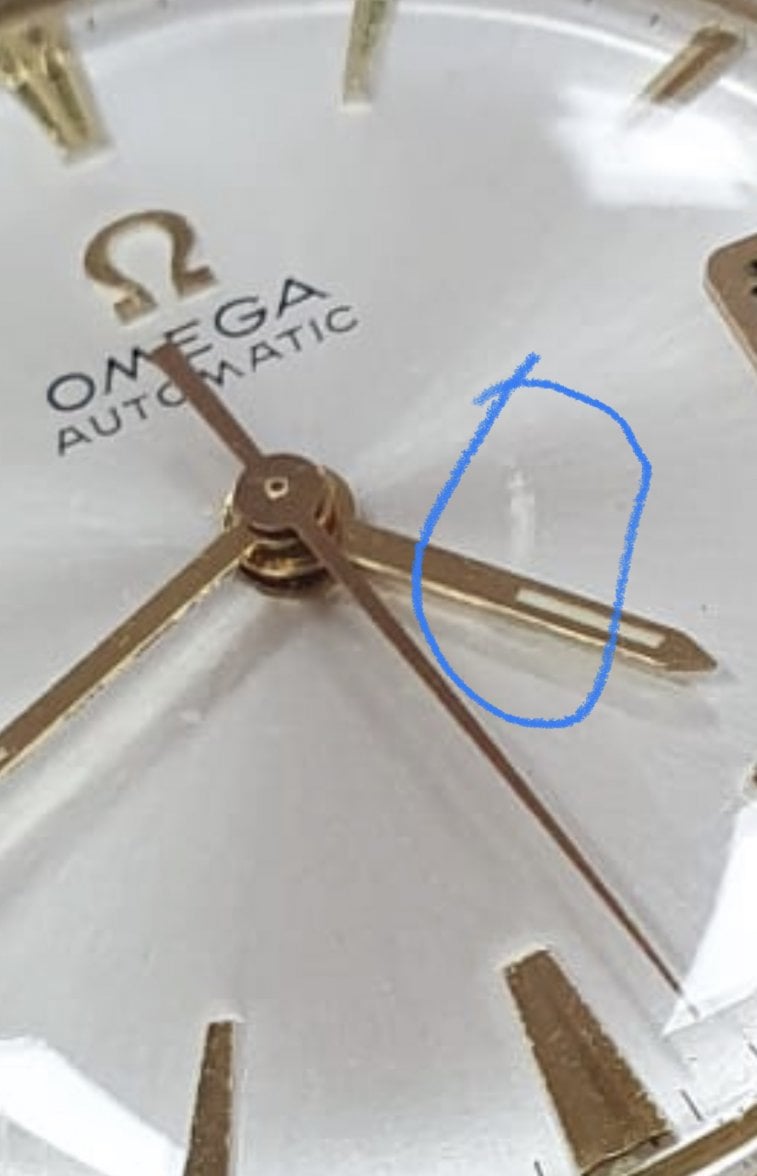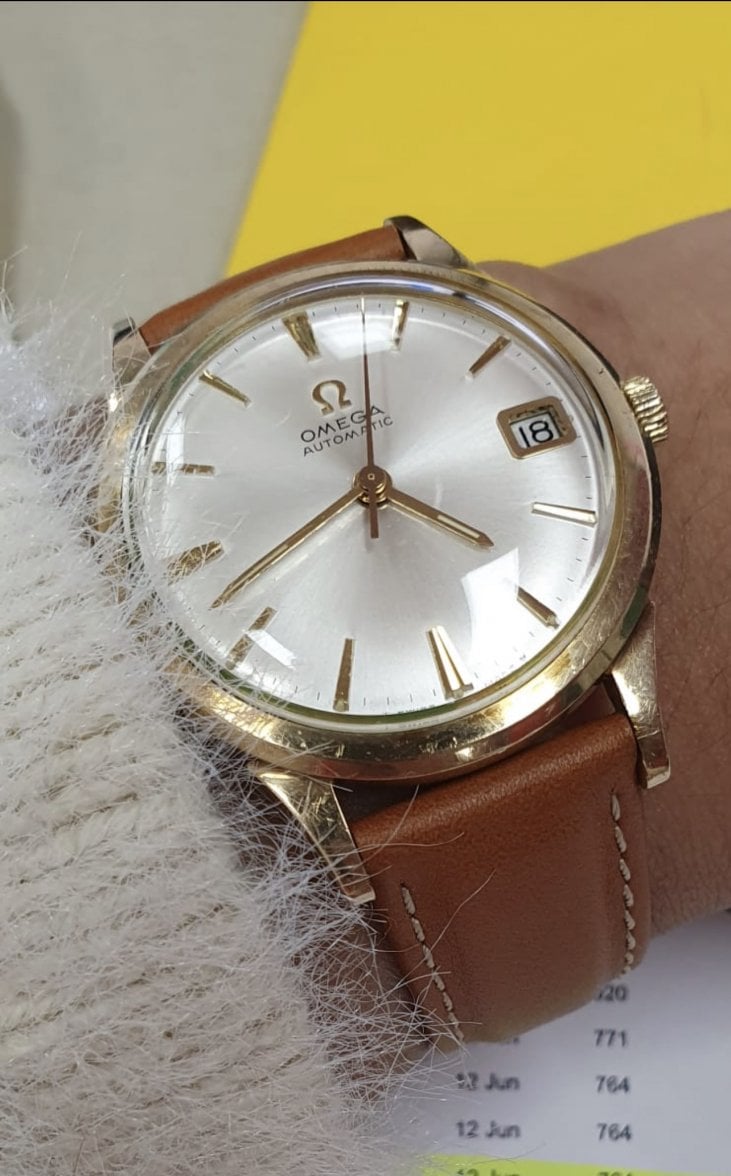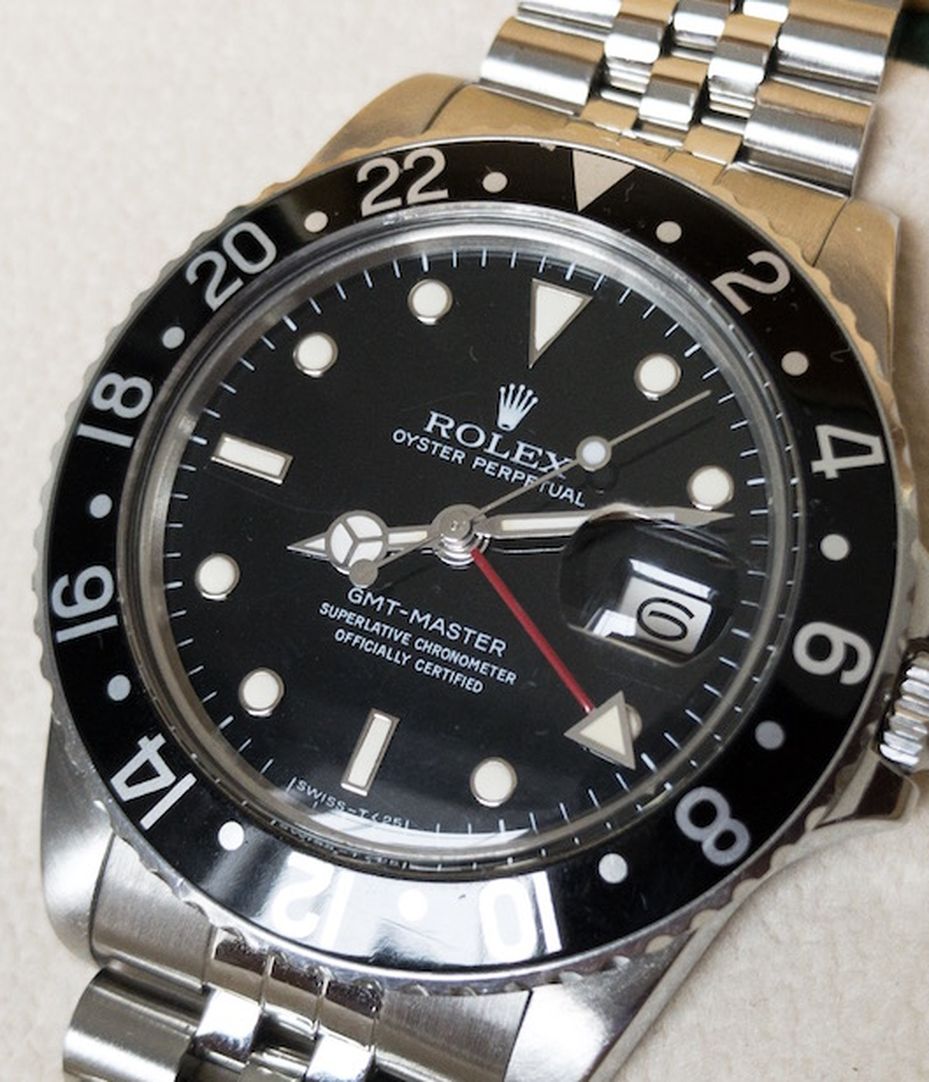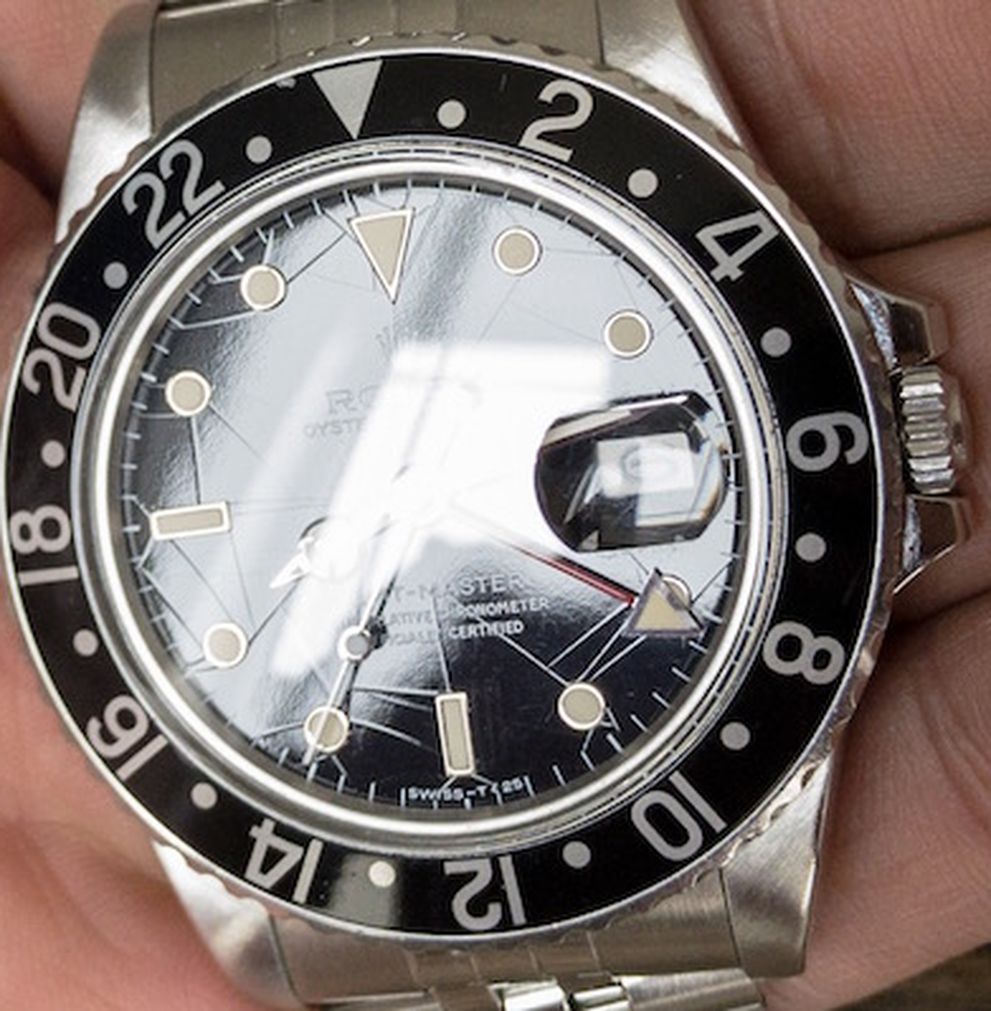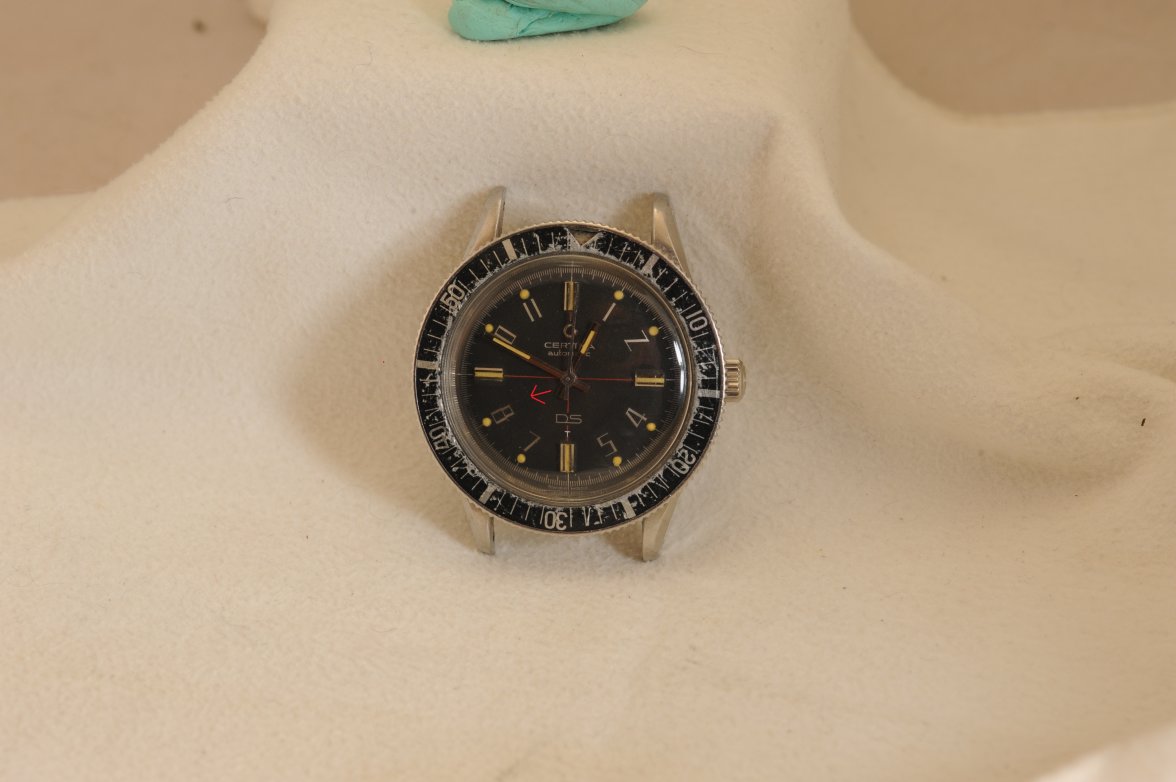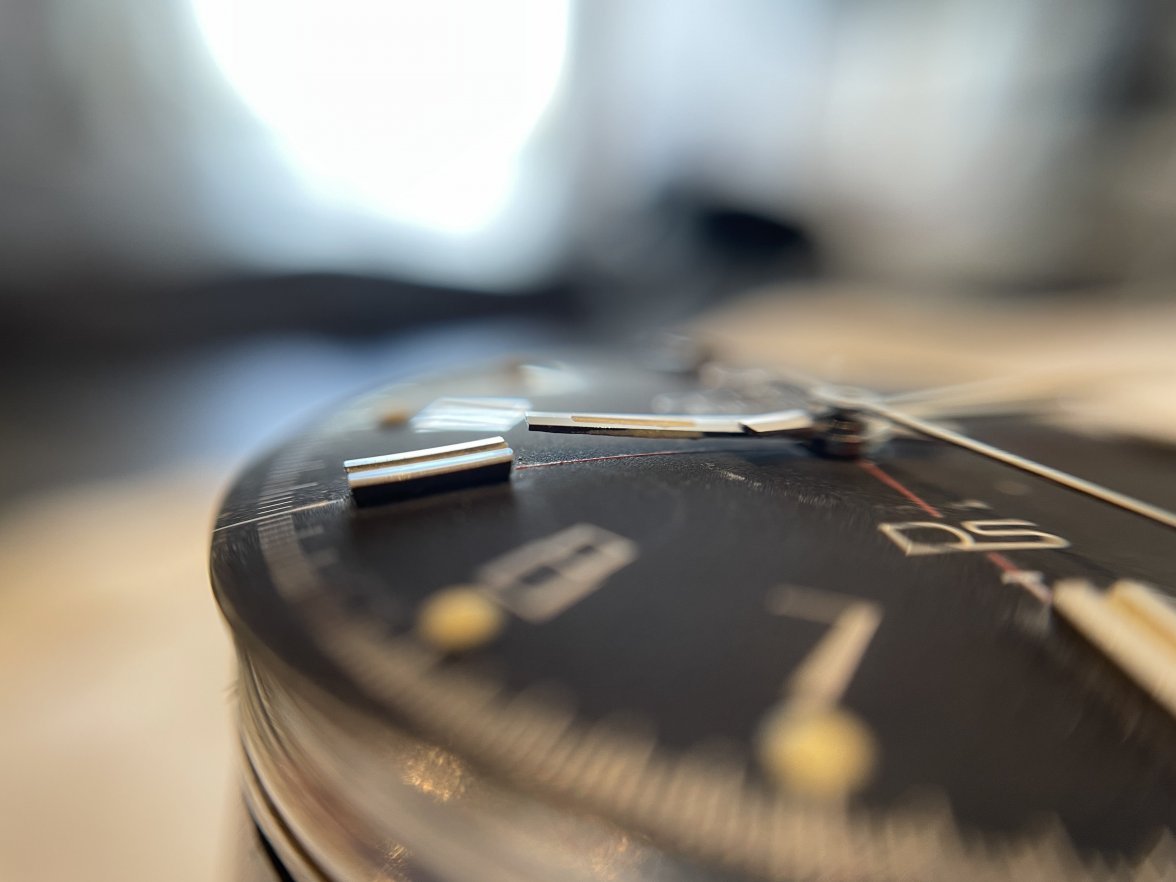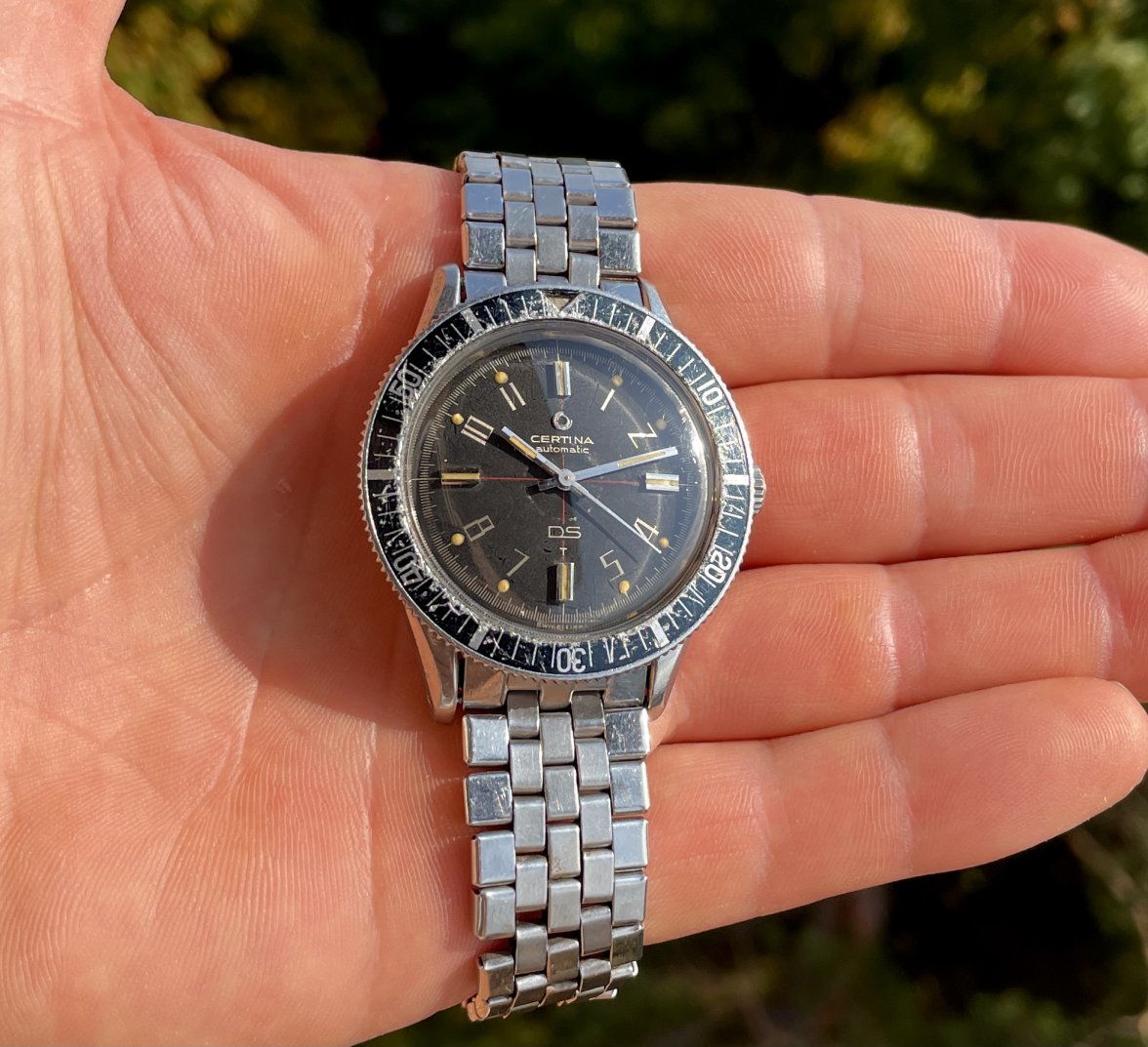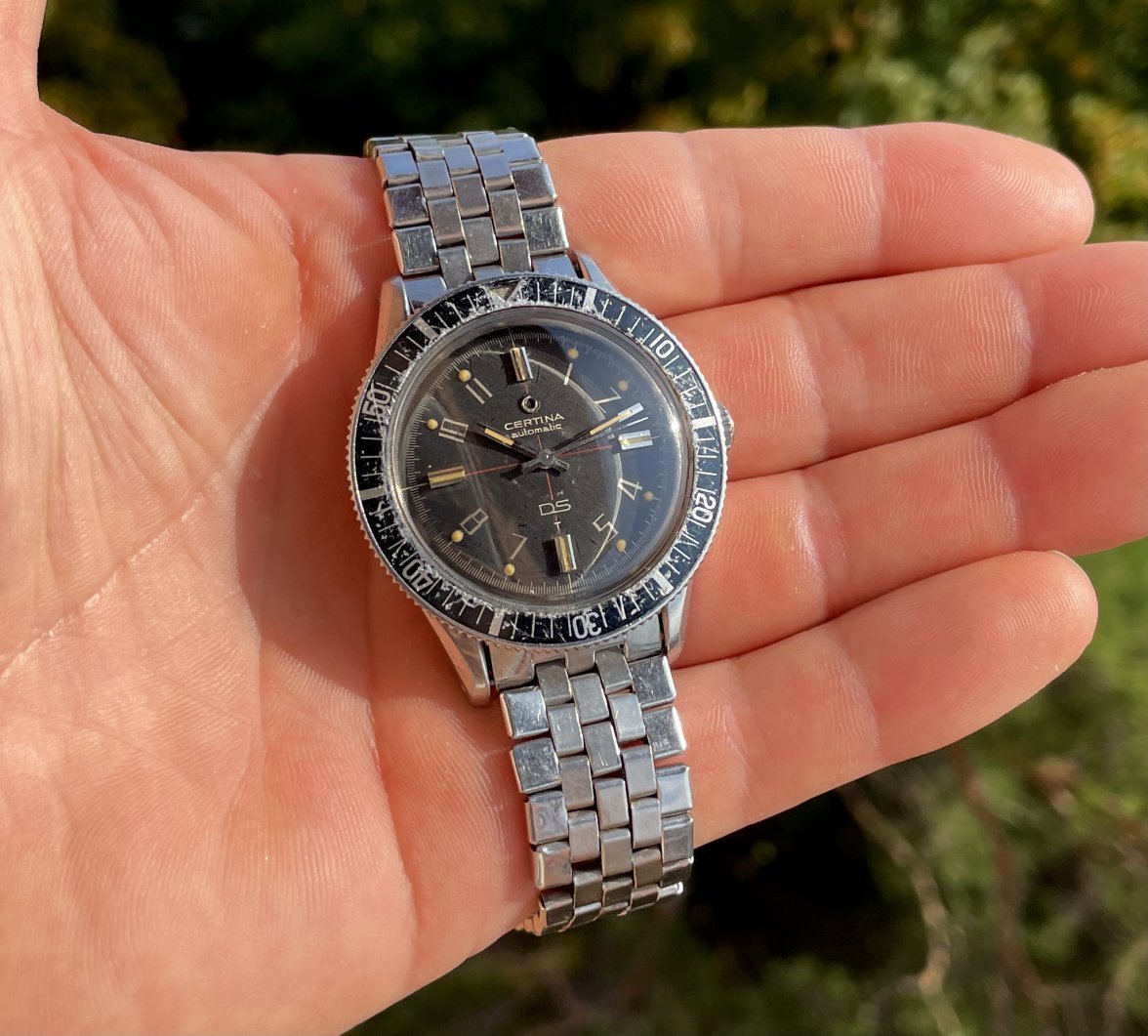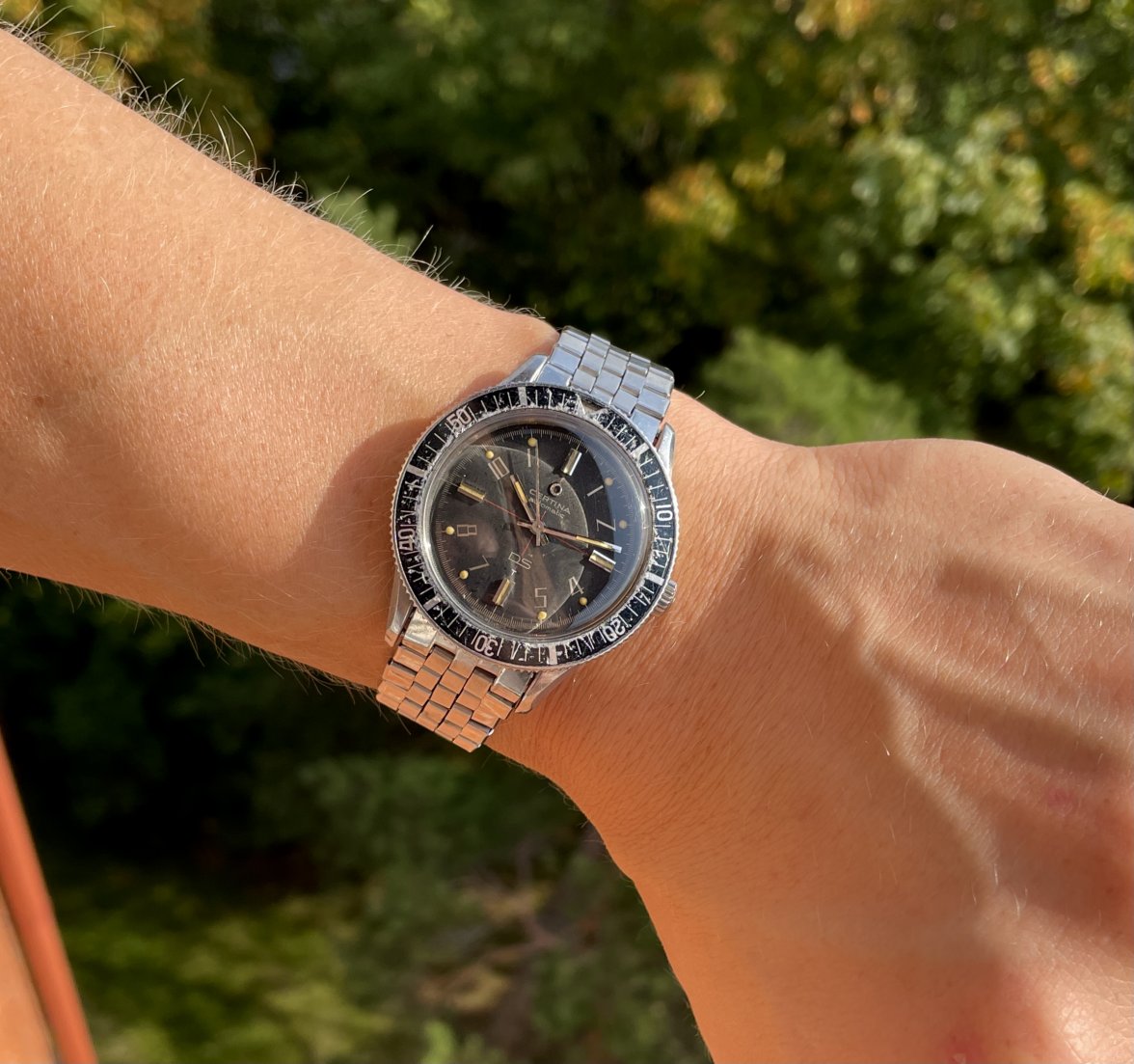A theory:
Unbeknownst to the seller, one of the dial feet is broken. While the watch was in his possession, there would have been no reason to be suspicious, and especially if the watch was rarely worn. When it was shipped, there was a serious shock, or serious of them, and the dial lost its seated integrity, allowing contact to be made with the hour hand.
An admittedly much more "far out" theory:
The circular mark, caused at some point, and in some way, by the hour hand, was actually present when the seller owned the watch, but obscured by a light "touch-up" job executed under previous ownership. The refinish looked good enough to the naked eye so as not to arouse attention, but, during the recent international shipping, as a result of one, and possibly more shocks, the thin layer of old, dry material was jarred loose.
Why did the buyer see no evidence of it in powder form? Well, the amount could be so small that it would make detection difficult without actually tapping the dial over a clean sheet of paper.
